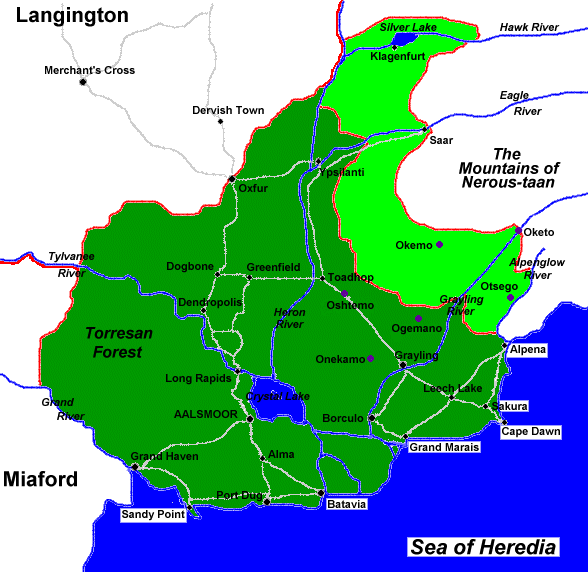









| Batavia | 33,000 | port, wholesale, fish | |
| Aalsmoor (capital) | 16,000 | port, fish | |
| Port Dug | 10,000 | port, fish | |
| Grand Haven | 9,000 | port, lumber, fish | |
| Grayling | 7,000 | lumber, leather | |
| Borculo | 6,000 | paper, farm tools, leather | |
| Long Rapids | 6,000 | textiles, lumber, port | |
| Oxfur | 5,000 | charcoal, leather | |
| Dendropolis | 5,000 | lumber, leather | |
| Dogbone | 4,000 | farm tools | |
| Alpena | 4,000 | lumber, port | |
| Grand Marais | 3,000 | lumber, port | |
| Ypsilanti | 2,000 | farm tools, leather | |
| Greenfield | 2,000 | ||
| Sakura | 2,000 | silk, laquer ware | |
| Sandy Point | 1,000 | glass, fish, port | |
| Leech Lake | 1,000 | ||
| Alma | 1,000 | ||
| Saar | 1,000 | metal working, wine | |
| Klagenfurt | 1,000 | metal working, stone | |
| Oshtemo | 1-2,000 (seasonal) |
entertainment |
 Return to the Torresan Main Page.
Return to the Torresan Main Page.